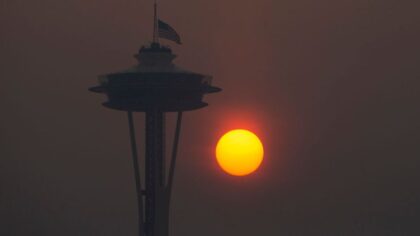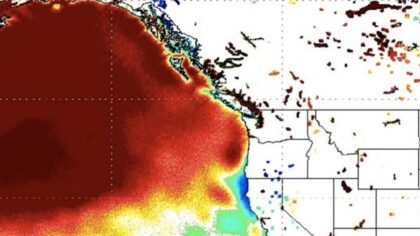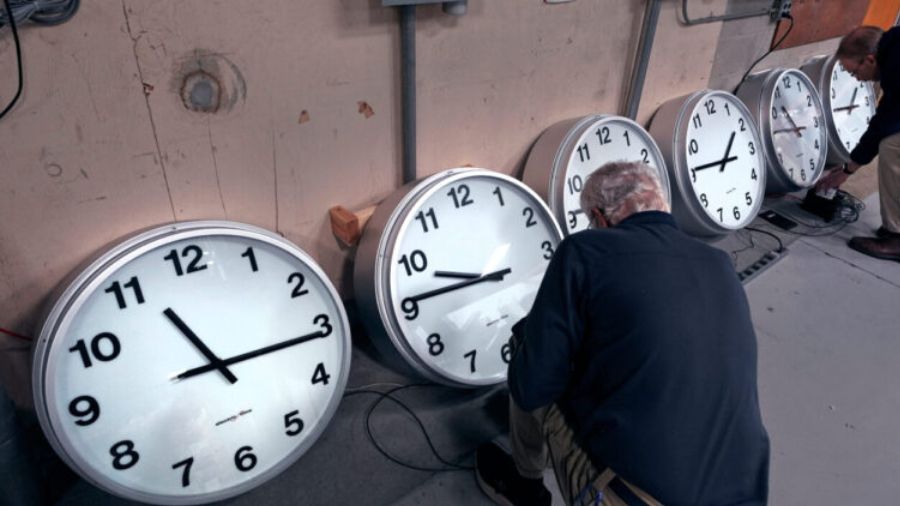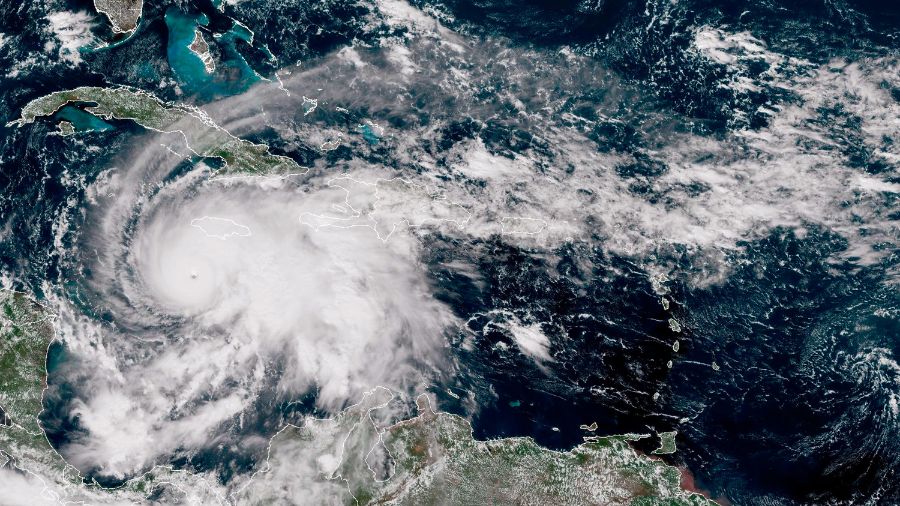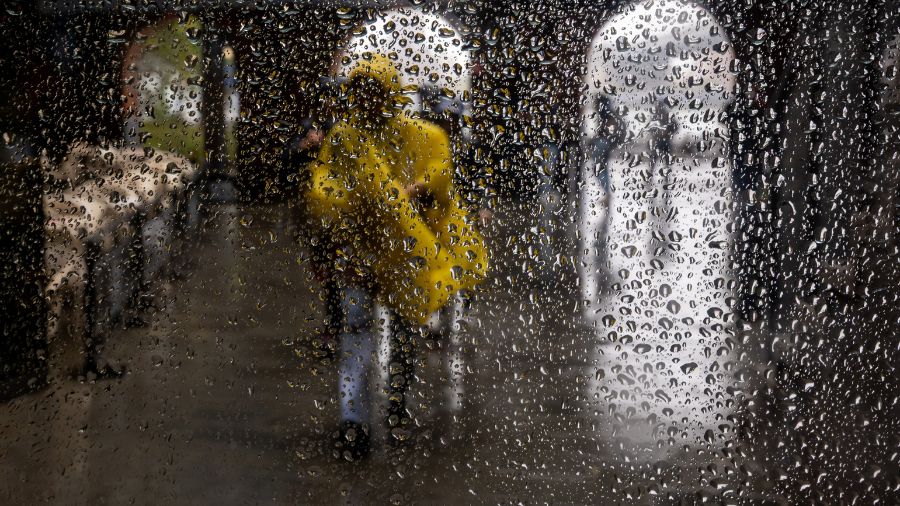63 years after Columbus Day Storm, is western Washington prepared for the next big wind storm?
Oct 10, 2025, 5:00 AM | Updated: 3:36 pm
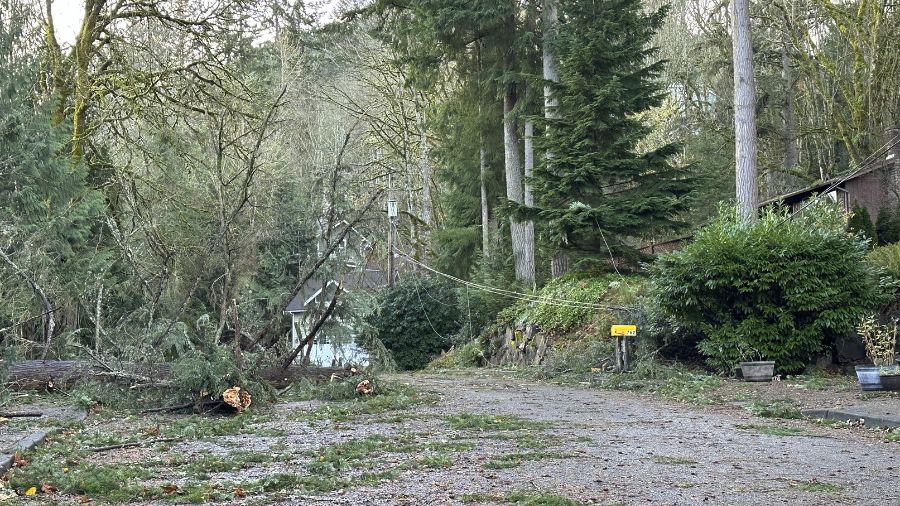
Damage is seen in a neighbourhood in Issaquah, Wash., Wednesday, Nov. 20, 2024, after a 'bomb cyclone' brought high winds to the Pacific Northwest overnight. (Photo: Martha Bellisle, AP)
(Photo: Martha Bellisle, AP)
Hurricane season in the Atlantic and the Pacific Oceans wraps up around Nov. 1. Though some in Western Washington ask, “Do we get hurricanes here?” The short answer is no, but we do get hurricane-force winds.
Hurricanes are tropical cyclones fueled primarily by warm sea surface temperatures of 80 degrees or warmer. The waters in the Caribbean and Gulf of Mexico continue to have quite warm temperatures in the mid and upper 80s, giving an exceptional jolt of energy, rapidly intensifying tropical cyclones into hurricanes.
As those who venture into the ocean along the outer coast know, the waters in the northern Pacific are much cooler than 80 degrees. Yet strong, dangerous windstorms can and do develop.
In fact, they frequently happen across the northern Pacific during the fall and winter seasons. One such intense storm is forecast to move into the Gulf of Alaska a week from now. The only impact for western Washington from this storm will be rising ocean swells along the outer coast during that time.
No tropical cyclones, but ‘bomb cyclones’ threaten western WA
The storms that intensify rapidly are called meteorological bombs or the new term some have adopted – bomb cyclones. These are North Pacific storms that intensify by a drop of 24 millibars of atmospheric pressure or more in 24 hours or less. We often do not hear of these storms until they approach western Washington.
The last strong, widespread, damaging wind storm to strike western Washington was the Hanukkah Eve Wind Storm of December 2006. Winds along the coast peaked over 100 mph, while in the western interior, wind gusts reached up to 80 mph, blowing hundreds of trees down. More than 1.5 million people lost electric power, and some were without power for more than a week.
Other memorable big strong impactful wind storms in recent decades include the 1993 Inauguration Day Storm that packed winds up to 65 mph, the 1979 Hood Canal Storm that had winds of 80 mph bringing down the floating bridge, the December 12, 1995, storm with winds up to 80 mph, and the November 14, 1981, wind storm which had gusts up to 75 mph.
Yet the granddaddy of them all, the wind storm that all other wind storms are compared to, is the 1962 Columbus Day Storm, the strongest non-tropical wind storm to ever hit the lower 48 in American history. Winds along the Oregon and Washington coast had gusts up to 150 mph, and western interior winds from Eugene, Oregon, north to Vancouver, BC, were in excess of 100 mph.
The storm along the west coast claimed 46 lives, hundreds were injured, thousands of buildings were destroyed, power outages for millions from the San Francisco Bay Area to British Columbia, and it blew down 15 billion board feet of timber from the coast to western Montana, enough lumber to build a million homes.
Hurricane-force winds have struck WA before and could again
The Washington State Climatologist Office estimated the region has a strong, damaging wind storm with winds up to 60 mph approximately every 10 to 20 years. Windstorms with hurricane-force winds occur far less frequently, yet they impact the region with downed trees and power and communication outages for extended periods of time. In the wake of the Columbus Day Storm, many did not have power restored for more than two weeks.
In the wake of the 1962 Columbus Day Storm, utility crews across the nation moved into the region to help restore power. The effort was exceptionally challenging since big BPA transmission towers carrying hydroelectric power from east of the Cascades were toppled to the ground. Some did not get power restored until November.
In the Hanukkah Eve Wind Storm of December 2006, Puget Sound Energy noted that they lost 70% of their infrastructure, which included the loss of power lines and power poles by the hundreds.
In 1962, the western Washington population was approximately 1.25 million residents. Today, the population is close to 7 million.
What if another Columbus Day Storm struck the region today? The impact would be immense, leaving millions without electricity for days, if not weeks.
As it happened with the August 2023 Maui wildfire, cell phone towers would be without power, leaving cell phones likely useless. As it did in the Columbus Day wind storm, uprooted trees would knock out water and natural gas lines. Gasoline would be in short supply since most service stations don’t have backup power generators to operate their pumps.
Recommended preparation techniques
With the Great ShakeOut earthquake drill coming up on Oct. 16, a major earthquake would also disrupt power, communications, and water and gas service for an extended period of time.
Could the region handle being without these services for an extended period while response teams work to rebuild the infrastructure? That is a good question and one everyone should ask themselves, and consider the necessary actions to take in advance of any major disaster.
As the 63rd anniversary of the 1962 Columbus Day Storm (Oct. 12) arrives, you may be motivated to take action and better prepare your home, business, car, pets, and more. Visit ready.gov or your local emergency management organization’s website for helpful lists and tips. Getting started on preparing in advance is the big first step and does not involve large expenses.
Ted Buehner is the KIRO Newsradio meteorologist. Follow him on X and Bluesky. Read more of his stories here.

